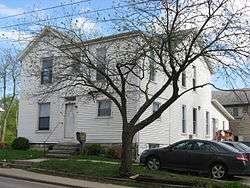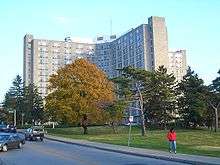Carl H. Eigenmann
| Carl H. Eigenmann | |
|---|---|
.jpg) | |
| Born |
March 9, 1863 Flehingen, Germany |
| Died |
April 24, 1927 (aged 64) USA |
| Nationality | German/American |
| Fields | |
| Institutions |
San Diego Biological Laboratory National Academy of Sciences |
| Alma mater | Indiana University Bloomington |
| Notable students | Nathan Everett Pearson |
Carl Henry Eigenmann (March 9, 1863 – April 24, 1927) was an ichthyologist who, along with his wife Rosa Smith Eigenmann, described many of the fishes of North America and South America for the first time.
Born in Flehingen, Germany, at age 14 he moved to Rockport, Indiana. Within a few years, he had enrolled at the Indiana University, where he studied under David Starr Jordan. Eigenmann received a bachelor's degree in 1886, and soon after went to California, where he met Rosa Smith, herself already becoming known for her work on West Coast fisheries. They married on August 20, 1887, and then went to Harvard University, where they studied the collections made by Louis Agassiz and Franz Steindachner, and produced the first of a series of joint publications.
They moved to San Diego, California, in 1888, where he worked as curator of a natural history society, and helped found the San Diego Biological Laboratory. He received his PhD from Indiana in 1889, and took up a professorship of zoology there in 1891. In 1892, famed scientist Albert C. L. G. Günther financed Eigenmann's first expedition, a trip throughout western North America, where many new species were collected. Subsequent explorations focussed on the blind fishes and salamanders of caves in Indiana, then in the caves of Texas, Missouri, and Cuba.

After a trip to the University of Freiburg in 1906-7, Eigenmann became the dean of Indiana's graduate school in 1908. In the same year, he secured support from the Carnegie Museum for a trip to South America, and in September 1908, the Carnegie British Guiana Expedition got underway. They returned with 25,000 specimens, resulting in the description of 128 new species and 28 new genera. Subsequent trips went to Colombia (1912) and the Andes (1918). Rosa continued to collaborate with him during the Indiana years, but less frequently; of their five children, one daughter was disabled and a son was eventually institutionalized, a burden that was mostly borne by Rosa.
Eigenmann's later years were spent writing up reports on his previous expeditions, and assisting younger colleagues in mounting their own trips. He was elected to the National Academy of Sciences in 1923.
When Carl suffered a stroke in 1927, the family returned to San Diego. He died in April 1927.
Eigenmann Hall

In 1970, a newly constructed residence hall building on the Indiana University Bloomington campus, designed by Eggers & Higgins to be the tallest building in Monroe County, was named after Carl H. Eigenmann. Until 1998, the residence hall was reserved for the graduate students, as well as other students who were either over 21 or admitted as foreign students. Since 1998, Eigenmann Residence Center houses American undergraduates, as well.
References
- AMNH bio, with photo
- Eigenmann Hall (article in Bloomingpedia)
- Eigenmann Student Government
External links
- National Academy of Sciences Biographical Memoir
- Carl H. Eigenmann papers, 1884-1925 at the Indiana University Archives.